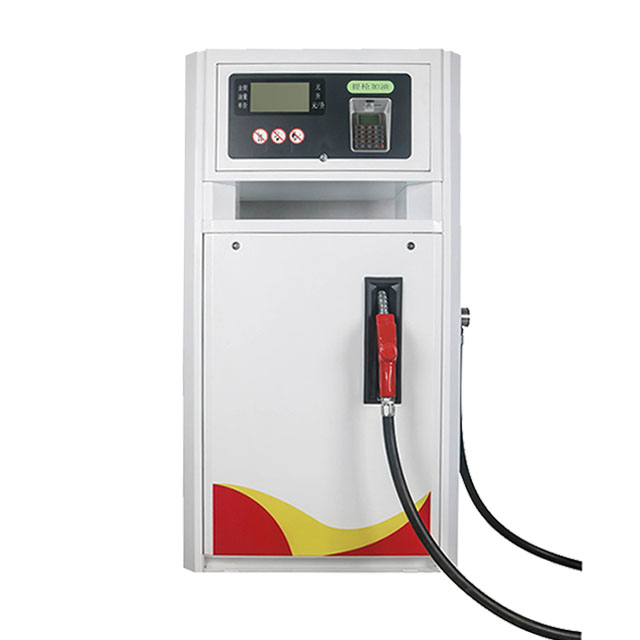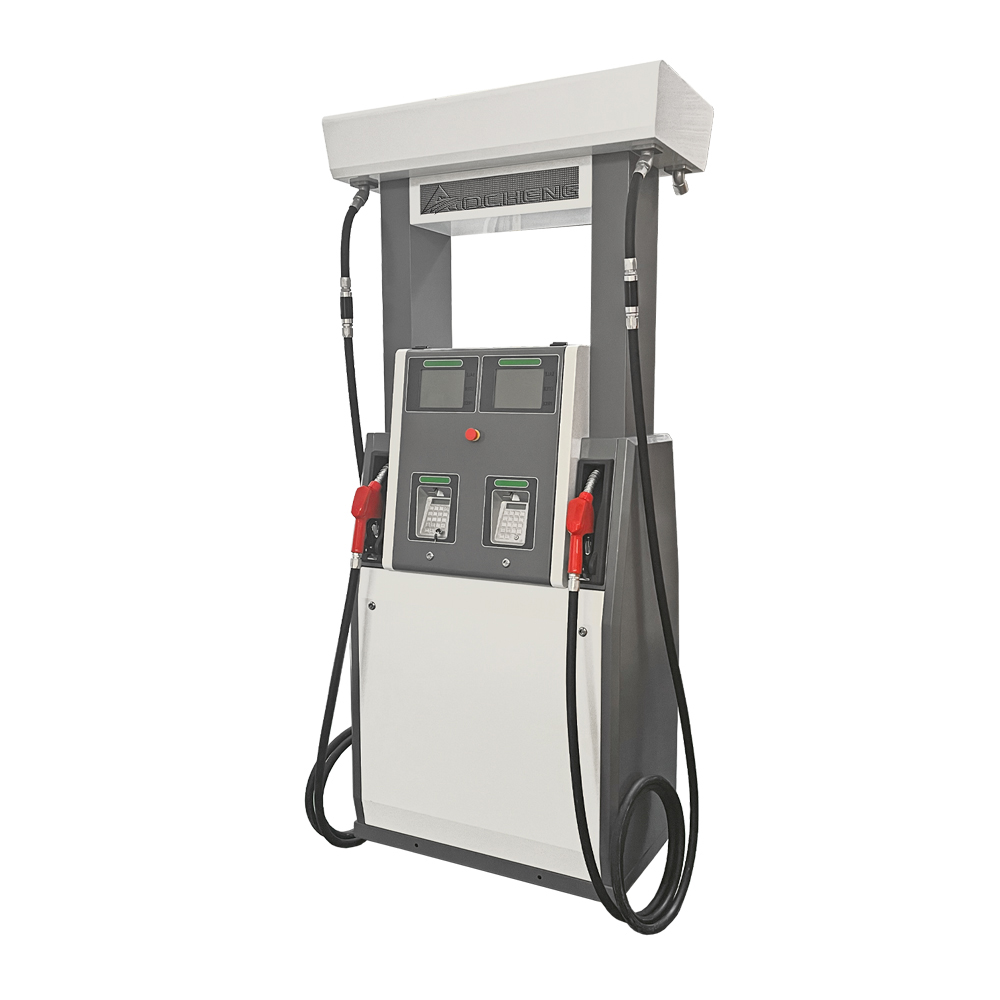The fuel dispenser market is experiencing a wave of transformation. Factors such as technological advancements, environmental considerations, and changing consumer preferences affect this. This blog delves into the key trends that are shaping the future of fuel dispensers. Check them out below. What Are the Different Trends that Affect the Future of Fuel Dispensers? Integration […]
The fuel dispenser market is experiencing a wave of transformation. Factors such as technological advancements, environmental considerations, and changing consumer preferences affect this.
This blog delves into the key trends that are shaping the future of fuel dispensers. Check them out below.



A noteworthy trend in the fuel dispenser market is the integration of renewable energy resources. Over the past years, sustainability has been a priority across various industries. The fuel dispenser is no exception here.
Solar-powered dispensers, in particular, are gaining traction in remote or off-grid locations. Such places are known for lack of access to traditional power sources.
As the name implies, these fuel dispensers harness solar energy to operate. One main advantage of such a setup is reduced reliance on conventional electricity. Moreover, there are minimized carbon footprints which is a main concern for many environmentalists.
The rise of electric vehicles (EVs) is also reshaping the fuel dispenser market. This trend has led to the integration of EV charging stations alongside traditional fuel dispensers. By so doing, fuel dispenser manufacturers are shifting towards alternative energy sources.
Fuel dispenser systems are rapidly evolving to include fast-charging units for electric vehicles. These units are designed to accommodate different types of EVs. They can also provide rapid charging capabilities.
The evolution of digital payment solutions is another key trend in the fuel dispensing realm. Digital payment solutions have become standard in fuel dispenser systems. These may include contactless and mobile payments. This trend offers greater convenience and even enhances the overall customer experience.
Contactless payment methods, like NFC (Near Field Communication), let customers pay quickly. In many cases, it is done by just tapping their smartphones or contactless cards. Thus, there are quick transactions and it even cuts down physical contact.
The Internet of Things (IoT) is revolutionizing the fuel dispenser systems, too. This trend introduces new levels of connectivity and data utilization. IoT-enabled dispensers offer real-time monitoring and management capabilities. The outcome is improved operational efficiency and customer service.
IoT connectivity also facilitates advanced security measures. Improving cybersecurity protocols leads to enhanced protection against data breaches and fraud. This gives customers peace of mind since there is safety and integrity to their transactions.
Another central theme in the fuel dispenser market is sustainability. The trend is responsible for driving the adoption of eco-friendly technologies. Beyond renewable resources, other innovations contribute to a greener fuel dispensing infrastructure.
Alternative fuel dispensers for biofuels, hydrogen, and others are becoming more prevalent. These support the transition to cleaner energy options. The transition will help contribute to reducing greenhouse gas emissions.
Additionally, energy-efficient designs and components are being incorporated into fuel dispensers. This move helps minimize the environmental impact of such dispensers.
An enhanced user experience is another priority for companies involved in fuel dispensing. Interactive displays, customizable settings, and advanced user interfaces are transforming how customers interact with dispensers.
Some brands offer touchscreen interfaces with intuitive navigation. This feature provides users with clear information about fuel options, pricing, and promotions. Some placed personalized settings that are tailored to customers’ fueling needs.
Feedback mechanisms are employed in some fuel stations. The goal is to enable customers to provide input on their experience and report any issues. The real-time feedback helps fuel station operators address concerns promptly. This will result in continuously improving their services.
The automation and self-service trend reshape the fuel dispenser market by offering customers more independence. Self-service kiosks and automated fueling systems are becoming more common. These are efficient in streamlining the fueling process and reducing the need for direct interaction with station staff.
A self-service kiosk allows customers to do the following without assistance:
Automated fueling systems further enhance this trend by enabling customers to initiate and complete the fueling process on their own.
The fuel dispensing market is continuously evolving. In light of this, compliance with new regulations and standards remains a critical consideration. Fuel dispenser systems must adhere to changing environmental and safety regulations. These include emission standards and fuel quality requirements.
Certification and adherence to industry standards are essential. The mentioned requirements ensure the reliability and performance of fuel dispensers. Manufacturers and operators must stay informed regarding regulatory changes. They should also implement necessary updates to maintain compliance and uphold industry best practices.
Smart Maintenance Solutions are becoming increasingly important in the fuel dispenser market.
Smart maintenance solutions are becoming more important in the fuel dispenser market. Predictive maintenance, powered by data analytics and IoT technology, helps identify and fix potential issues before they affect dispenser performance.
Automated restocking systems are also being introduced. These systems keep track of fuel usage patterns and automatically order more fuel when needed. This reduces the risk of running out and ensures a steady supply for customers.
As the fuel dispenser market evolves, AOCheng is positioning itself at the forefront of these changes by adapting its products to meet the latest trends. Here’s a closer look at how AOCheng’s offerings align with the key trends shaping the future of fuel dispensers:
AOCheng’s 4G IoT module is a prime example of how the brand is embracing the Internet of Things (IoT) to enhance fuel dispenser systems. This module allows for the real-time upload of refueling data, which is crucial for the effective monitoring and management of fuel dispensers.
AOCheng’s Station System is designed to streamline the management of fuel dispensers through a comprehensive digital interface. This system includes features for setup, monitoring, and reporting, all accessible from a PC.
AOCheng’s products also reflect the growing emphasis on automation and smart maintenance. For instance, the AC-38 Automatic AdBlue Nozzle with Meter demonstrates AOCheng’s commitment to automating the fueling process. This nozzle is designed to handle AdBlue efficiently, with built-in metering for accurate dispensing.
The AC-160 Big Fuel Dispenser by AOCheng is a comprehensive fuel dispensing solution designed to meet various fueling needs. The dispenser includes an automatic reset function, simplifying operation and reducing downtime between transactions.
The dispenser uses a solenoid valve for precise flow control. It is paired with a 4-position type positive displacement meter. This combination ensures accurate and consistent fuel measurement and delivery.
The AC-160 Big Fuel Dispenser by AOCheng is designed to adapt to the evolving trends that shape the future of fuel dispensers. Equipped with advancements, this fuel dispenser remains a relevant and efficient solution for modern fueling stations.




